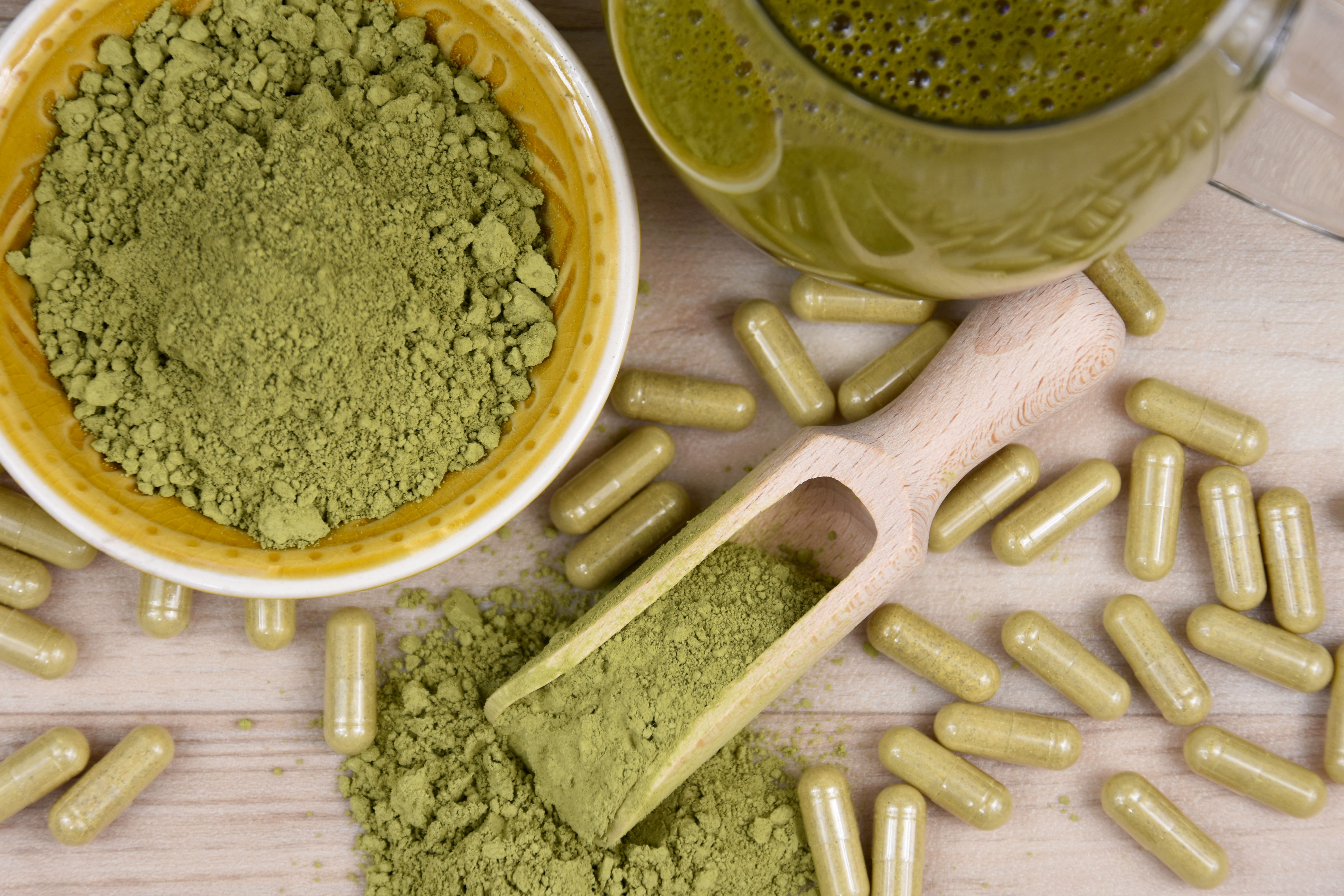Understanding Kratom Abuse and Treatment: Risks, Effects, and Recovery

Disclaimer: As research is so limited, in the scope of time, on Kratom, we do not claim to be experts on the subject or guarantee any results or outcomes from any treatment programs offered. Always consult your physician first before starting or stopping new treatment therapies or programs.

In recent years, the popularity of the drug kratom has grown significantly in the United States, often marketed as a cheaper or easier to obtain alternative to opiates. Kratom has quickly emerged as a substance with potential for abuse, dependence, and kratom withdrawal symptoms, warranting the need for proper treatment pathways.
Our sober living and treatment program includes a dedicated track to address kratom abuse, offering tailored support for those struggling with its dependency.
The Rise of Kratom Use in the U.S.
Kratom has been marketed primarily as a dietary supplement in the U.S. since the early 2000s. Sold as powders, capsules, teas, or extracts, it gained traction among individuals seeking an alternative to drugs such as opioid pain pills, heroin and/or fentanyl. It has also been recorded by some as offering some relief for various ailments, including chronic pain and opioid withdrawal although there is no long term research to back any of these findings currently. The available research estimates show that by the mid-2010s, millions of people were consuming kratom, often purchased from retail outlets and online stores.
Surveys, such as the one conducted by the Pain News Network in 2017, reveal that many users consume kratom for pain management (51.34%), anxiety relief (14.15%), or to aid in opioid alternative (9.24%). Users report effects such as mood alteration, reduced pain, and often a euphoric high. However, there are increasing concerns about its potential for dependence, withdrawal symptoms, and adverse health effects.
Risks Associated with Kratom Use
While kratom does not align perfectly with traditional opioids in its chemical structure, its active compounds, such as mitragynine and 7-hydroxymitragynine, act as opioid receptor agonists. This means that it produces effects similar to opioids, though milder in terms of euphoria and respiratory depression.
Dependence and Withdrawal Symptoms
Chronic, high-dose use of kratom has been linked to dependence. Users report withdrawal symptoms similar to, though milder than, opioid withdrawal. These symptoms include:
- Muscle aches
- Irritability and hostility
- Sleep disturbances
- Depression and anxiety
- Sweating and chills
According to a survey by Grundman (2017), nearly 20% of respondents reported withdrawal symptoms after ceasing kratom use, while 15% reported building a tolerance that required them to take increasingly higher doses.
Potential Health Risks
Although kratom is not considered as addictive as traditional opioids, misuse of the substance can lead to several health problems:
- Adverse Reactions: Reports indicate that some users experience nausea, stomach discomfort, constipation, dizziness, and vomiting, particularly at high doses.
- Polydrug Use: Many instances of kratom-related adverse effects or fatalities involve simultaneous consumption of other substances, including alcohol, benzodiazepines, or synthetic opioids, complicating the clinical picture.
- Unregulated Products: The lack of FDA oversight means some kratom products are adulterated with harmful substances such as synthetic cannabinoids or opioids, further increasing health risks.
While deaths directly linked to kratom alone seem to be rare, high doses are considered dangerous and have potential for adverse side effects including seizure and/or death. It is also yet to be seen the longer term effect on health as research only dates back about a decade thus far. As the FDA currently does not classify kratom as a restricted substance, many cases involving kratom combined with other drugs—whether as user-added substances or potentially harmful additives introduced during production and/or distribution to enhance addictiveness or amplify the high—underscore the risks and critical need for thorough regulation.
Kratom Regulation and Its Role in Public Health
Debates about kratom's regulation have sparked concerns about its safety and abuse potential versus its potential public health benefits. Some studies suggest that banning kratom outright could worsen public health outcomes by forcing users to turn to more dangerous substances, such as illicit opioids. Moreover, unregulated black-market kratom products may become adulterated with harmful chemicals, increasing the risk of overdoses.
The Food and Drug Administration (FDA) and Drug Enforcement Administration (DEA) have wrestled with whether kratom should be classified under the Controlled Substances Act. Advocates for its regulation argue that better labeling, controlled manufacturing, and FDA oversight could reduce risks while allowing consumers safe access.
Treating Kratom Abuse: Pathways to Recovery
Kratom dependence can be extremely uncomfortable and individuals suffering from chronic use often require professional help to detoxify and achieve long-term recovery.
Detoxification and Withdrawal Management
The first step in treating kratom abuse is safe detoxification. Medical detox focuses on managing withdrawal symptoms and minimizing discomfort. While kratom withdrawal is generally less intense than withdrawal from heroin or prescription opioids, symptoms such as anxiety, depression, and irritability may require medical and psychological interventions.
Therapeutic Approaches
- Behavioral Therapies: Treatments like Cognitive Behavioral Therapy (CBT) can help individuals identify the triggers that led to kratom use and develop healthier coping mechanisms.
- Group Support: Peer support groups, such as SMART Recovery or other 12-step programs, provide essential emotional support, accountability, and a sense of community.
- Dual Diagnosis Treatment: Many individuals who abuse kratom may also struggle with co-occurring disorders like anxiety, depression, or PTSD. Treating both the substance use disorder and the underlying mental health issues is crucial for long-term success.
Sober Living and Specialized Treatment Tracks
Our drug rehabilitation program in Los Angeles offers a unique treatment program for kratom abuse recovery. This program blends personalized therapeutic care with a supportive environment that fosters accountability and connection.
Soon to be available at our South Jersey luxury sober living location, we provide structured support, group therapy, and targeted resources to help individuals recover from kratom dependence. By focusing on wellness, emotional resilience, and relapse prevention, we offer a clear path forward for those seeking freedom from substance use.
Why Seek Help for Kratom Abuse?
Recovery from kratom dependency can be challenging but is entirely possible with the right support. Attempting to quit without medical supervision can lead to unnecessary physical and emotional struggles. Programs like ours, designed for long-term recovery, emphasize not only detox but also the transformation of habits, emotional wellness, and reintegration into daily life.
Conclusion
Kratom abuse presents unique challenges for treatment due to its dual reputation as a natural remedy and its potential for dependency. As the substance continues to spark debates over its risks and benefits, those struggling with kratom misuse need specialized care.
Our sober living and treatment program is here to help. With a dedicated track focusing on overcoming kratom dependence, we provide individuals with the tools, resources, and supportive community they need to rebuild their lives. Together, we can create a pathway to sustainable recovery, ensuring hope, health, and freedom from addiction are within reach.